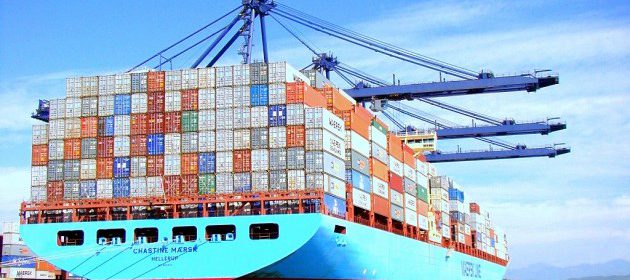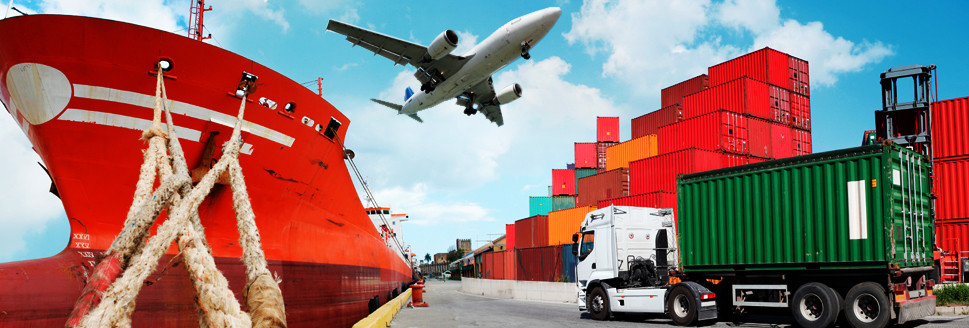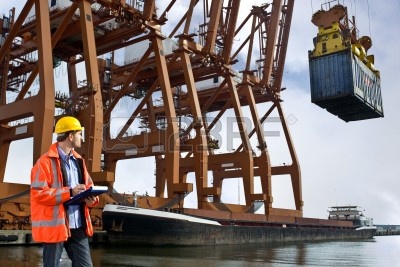Customs clearance

Import customs clearance procedure is to be performed to allow the entry of goods into the territory in an international transport operation. Export customs clearance procedure is to allow the goods. This procedure is to declare certain information concerning the import or export to the competent customs authority in the territory concerned: data importer and exporter and merchandise data.

Some of the data required to perform customs clearance are: tax data importer / exporter, origin / destination, name and country of means of transport, description of goods, number of packages, gross and net weights, volume, taxes payable (in the case of an import).
In addition, certain types of goods that require specific inspections (such as health or pharmacy). In these cases, customs clearance can not be realized without the certificates attesting that the goods have passed the relevant controls.
Who does this procedure?
Within the chain of international transport, the figure responsible for carrying out this process is the customs agent representing the importer or exporter to the customs office and is responsible for moving the client all notifications that can issue customs and performing payment of taxes and duties on their behalf.

What documentation is required?
To perform customs clearance import or customs clearance export, the customs agent indispensably requires the following documentation:
- Commercial invoice issued by the seller attesting to the sale of merchandise between the exporter and the importer and where tax data appear both as well as a brief description of the merchandise and the value and incoterm that has made the sale.
- Packing list issued by the seller accompanying the invoice and where showing the detail of the goods (number and type of packages, weight, volume, etc.).
- BL or bill of lading (bill of lading) issued by the company providing the transport (shipping company, airline or road) certifying that the goods have been loaded on board the means of transport (the customs agent must have original copies of this document).
In addition, there is other documentation that may be required:
- Inspection certificates, which usually will be issued by the customs agent himself if the goods required.
- Other certificates as the certificate of origin EUR-1 or ATR needed to qualify for preferences in paying taxes.
What processes should be followed for the declaration to customs of goods?
Customs declarations may be made orally or in writing, and the procedure considered normal writing. For this purpose the document for filing our written statements is the SAD (Single Administrative Document). This document can be paper, according to established procedures or using computer models.
Oral statements may be used for goods of a commercial nature, rather than having a commercial character not exceed a certain value, not part of a regular series of shipments and are not transported as part of a larger freight.

In export may verbal statement used in the goods without commercial nature contained in travelers’ personal luggage or sent by individuals and goods of a commercial nature, simultaneously, their total value does not exceed a set value, if not part of a series Similar regular shipments and are not transported as part of a larger freight.
Procedure of customs clearance of export goods
Pre-departure procedures:
- Title transport stevedoring companies enter the numbers of containers in their computer systems. The introduction of such numbers justify the physical presence on the dock of the goods.
- Declarations: admission / verification: after entering the container numbers, the authorization may be virtually immediate dispatch the request.
- Departure control goods: you will not have to perform the comparison of the DUA with the manifesto, and it will hold the system itself once the consignee of the ship enter in this data showed output and is subsequently used the date of shipment .
- Certificates and formalities post: all certificate formats may be introduced into the system, so you can have them on the day of shipment of the goods and sent even by teleprocessing to the economic operator.
Procedure of customs clearance of import goods
Before the arrival of the ship:
- The ship’s agent is authorized to present the premanifiesto before the arrival of the ship in port, to obtain the corresponding discharge permit automatically when the conveyor vessel completes its berthing and to inform the customs office rectifications that could take place.
- When the ship is ready to start unloading, premanifiesto, along with the indicated corrections, is converted immediately manifest and discharge operations begin unloading without seeking any permission on the site (location) that the consignee has scored in the header sheet premanifiesto.
- In the event that the manifesto bring browsed goods under the Community transit, both external (T-1) and internal (T-2), and if this transit fits the model of simplified transit, active customs form DUA immediate submission of import clearance, thus beginning the customs process. If the goods is covered by a single document Community transit, the consignee submits to the department, once made the comparison of these items, and active and to allow the presentation of the DUA.
- After the download, the consignee presented to customs disagreements had occurred between the manifest and the actual outcome of the goods unloaded in the number of packages, a difference that give rise to the issue of the relevant parts of surplus or lack of packages .
Customs formalities (office):
- From the moment that the consignee customs agent sends confirmation of departure, it proceeds to the presentation of DUA, thus beginning the procedures of clearance of goods.
- Also, in the event that the goods are subject to pre-clearance procedures to be carried out by other bodies other than the customs, the customs agent presents the C-5, by which the intervention is authorized these.
- In a period between half an hour, the customs indicates whether physical or pass appropriate inspection is carried out if the documentary clearance of goods.
- Whether from physical examination or not, to allow removal of the goods from customs area obtaining exemplary nº9 the DUA is necessary ( «release») by the customs agent. Indicates that obtaining the culmination of all clearance formalities, including inspection and security or payment of customs duties as appropriate.
- The customs agent, once obtained a «lift» delivers the carrier to proceed with the removal of the containers from the terminal (containers F.C.L.) or to remove packages that correspond stores deconsolidation (L.C.L.).
- Also, the customs agent liquidates the consignee outstanding expenses and shows the bill of lading, a document of authority over the goods, and release customs. The consignee facilitates the customs broker document delivery, without which the stevedoring company or desconsolidadora not deliver the goods to the carrier to abandon the «customs area».
- The customs agent shall transmit to the carrier the delivery order with the lift and it presented to the terminal or the store deconsolidation shipping order and to output control the customs area corresponding lift, terminating so the process import.
- The time of accrual on the importation of goods is on the date of acceptance by the office of DUA, DUA when the summary declaration is submitted to the customs authorities and they introduce it in a customs.

Procedure of customs clearance of goods for re-export
The ideal is to introduce the goods in a customs warehouse, perform the usual manipulations, such as change of labels (not source) and export. The introduction in a customs or free warehouse involves the suspension of customs duties and taxes and trade policy. This will benefit the operation because it does not have to bear the direct and indirect import taxes.
Procedure Customs clearance:
- After filing the statement and admitted it through customs, is assigned a channel release can be green (up immediately), orange (documentary recognition) or red (physical examination):
– The green channel immediately lift involves the automatic granting release of the goods. In case of returns filed by computer systems the document is printed with an authentication code that replaces the handwritten signature of the inspector, as the office is done with signature waived under the regulations developed for this purpose, producing the same effects.
– The orange documentary channel recognition involves checking all data contained in the declaration and its agreement with the documents submitted to it. After checking the above the corresponding lift is issued.
– The red channel physical examination involves a physical check of the goods by the customs and that the data and documents provided in the declaration match the goods described therein to. Once the testing and considered as the release of the goods is authorized. - It may be invalidated a statement after the granting of lift where goods covered in the same had been declared in error for a customs procedure entailing the obligation to pay customs duties instead of being placed under another scheme, provided that the goods are not they had used under the conditions provided for in the customs procedure for which they were intended; at the time they declared they were actually intended for another customs regime and fulfill all the requirements for inclusion in it, and immediately allocate the correct customs procedure.
- The request for invalidation of the declaration must be lodged within three months from the date of acceptance of the declaration
- You can invalidate a statement when it is shown that the goods have been declared by mistake instead of others that should have been initially with the conditions laid down in customs regulations and with a term equal to the previous course of three months.
- They may also be invalidated declarations for export or for the outward processing in the cases and conditions in customs regulations are established.
- You may not invalidate a declaration for that customs had been informed of its intention to physical examination of the goods, without previously had made it.
